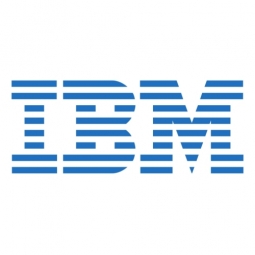
Technology Category
- Application Infrastructure & Middleware - Data Exchange & Integration
- Platform as a Service (PaaS) - Application Development Platforms
Applicable Industries
- Consumer Goods
- Retail
Applicable Functions
- Logistics & Transportation
- Procurement
Use Cases
- Supply Chain Visibility
- Time Sensitive Networking
Services
- System Integration
- Training
The Customer
Master Lock Company
About The Customer
The Master Lock Company is a globally recognized name in the field of padlocks and security products. Since its establishment in 1921, the company has consistently set new standards for lock design, application, and performance. Headquartered in Wisconsin, USA, TMLC is the largest global manufacturer and marketer of padlocks and safes. The company has been harnessing both organic growth and strategic acquisitions to launch international operations in new markets across Asia, Central America, and Europe. TMLC’s retail business relies heavily on electronic data interchange (EDI) to effectively communicate with its global base of trading partners.
The Challenge
The Master Lock Company (TMLC), the largest global manufacturer and marketer of padlocks and personal safes, was facing challenges due to its fast-paced global growth. The company was expanding its operations in new markets across Asia, Central America, and Europe, which meant onboarding significant numbers of additional trading partners, each with their own specific local requirements. TMLC’s retail business depended on electronic data interchange (EDI) to effectively communicate with its global base of trading partners. However, with an average of 40 new trading partners to onboard every year, the company’s lean EDI team was approaching its limits. The company was aware that they would soon need to add at least three full-time equivalents (FTEs) to the EDI team just to keep up with the increasing complexity. The challenge was to find a way to manage the rising requirements without driving up costs.
The Solution
TMLC decided to migrate its EDI platform to IBM Sterling Supply Chain Business Network, a security-rich, cloud-based solution for trading partner integration. This solution reduced the need for full-time resources dedicated to activities such as EDI mapping. When a new trading partner needed to be onboarded, TMLC simply submitted their requirements to IBM and the majority of the work was done for them. The IBM Sterling Supply Chain Business Network also provided cognitive analytics capabilities to help businesses gain deeper insight into EDI processes using visual reports and queries written in natural language. The platform also included IBM Sterling E-Invoicing, a platform that enabled businesses to exchange documents in an automated, compliant, and fully auditable way. This significantly reduced the complexity of TMLC’s international operations. Today, 95 percent of all TMLC’s EDI orders are processed via IBM Sterling Supply Chain Business Network with no manual intervention from the EDI team.
Operational Impact
Quantitative Benefit

Case Study missing?
Start adding your own!
Register with your work email and create a new case study profile for your business.
Related Case Studies.
.png)
Case Study
Improving Vending Machine Profitability with the Internet of Things (IoT)
The vending industry is undergoing a sea change, taking advantage of new technologies to go beyond just delivering snacks to creating a new retail location. Intelligent vending machines can be found in many public locations as well as company facilities, selling different types of goods and services, including even computer accessories, gold bars, tickets, and office supplies. With increasing sophistication, they may also provide time- and location-based data pertaining to sales, inventory, and customer preferences. But at the end of the day, vending machine operators know greater profitability is driven by higher sales and lower operating costs.

Case Study
Improving Production Line Efficiency with Ethernet Micro RTU Controller
Moxa was asked to provide a connectivity solution for one of the world's leading cosmetics companies. This multinational corporation, with retail presence in 130 countries, 23 global braches, and over 66,000 employees, sought to improve the efficiency of their production process by migrating from manual monitoring to an automatic productivity monitoring system. The production line was being monitored by ABB Real-TPI, a factory information system that offers data collection and analysis to improve plant efficiency. Due to software limitations, the customer needed an OPC server and a corresponding I/O solution to collect data from additional sensor devices for the Real-TPI system. The goal is to enable the factory information system to more thoroughly collect data from every corner of the production line. This will improve its ability to measure Overall Equipment Effectiveness (OEE) and translate into increased production efficiencies. System Requirements • Instant status updates while still consuming minimal bandwidth to relieve strain on limited factory networks • Interoperable with ABB Real-TPI • Small form factor appropriate for deployment where space is scarce • Remote software management and configuration to simplify operations

Case Study
Digital Retail Security Solutions
Sennco wanted to help its retail customers increase sales and profits by developing an innovative alarm system as opposed to conventional connected alarms that are permanently tethered to display products. These traditional security systems were cumbersome and intrusive to the customer shopping experience. Additionally, they provided no useful data or analytics.

Case Study
How Sirqul’s IoT Platform is Crafting Carrefour’s New In-Store Experiences
Carrefour Taiwan’s goal is to be completely digital by end of 2018. Out-dated manual methods for analysis and assumptions limited Carrefour’s ability to change the customer experience and were void of real-time decision-making capabilities. Rather than relying solely on sales data, assumptions, and disparate systems, Carrefour Taiwan’s CEO led an initiative to find a connected IoT solution that could give the team the ability to make real-time changes and more informed decisions. Prior to implementing, Carrefour struggled to address their conversion rates and did not have the proper insights into the customer decision-making process nor how to make an immediate impact without losing customer confidence.









